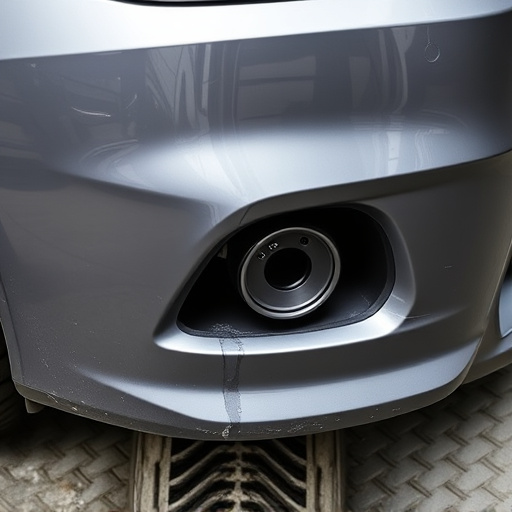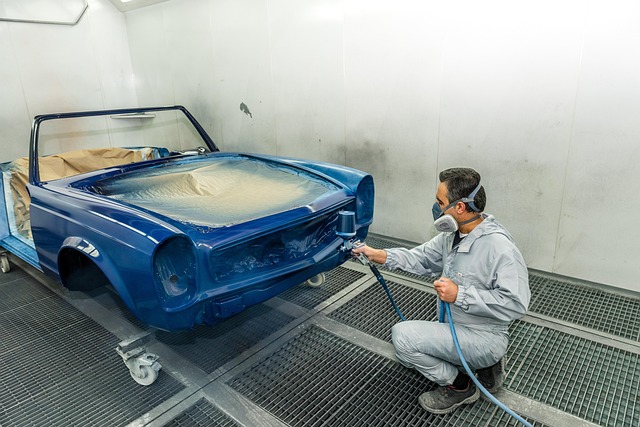Efficient sectioning procedures transform complex automotive repairs into manageable tasks. This strategy optimizes scheduling, resource allocation, and productivity in collision repair, especially for luxury vehicles. By dividing vehicles into sections (body panels, trim, mechanical), technicians prioritize damage assessment, ensuring high-quality standards and reduced turnaround times, ultimately enhancing customer satisfaction.
In the realm of efficient facility management, understanding and optimizing sectioning procedures is a game-changer. This article delves into strategies that transform the way repairs are scheduled, ensuring optimal resource utilization. From establishing a solid foundation through comprehensive knowledge of sectioning procedures, to identifying repairs with precision and implementing advanced scheduling techniques, these tactics revolutionize maintenance management. Discover how these methods lead to cost savings, improved efficiency, and enhanced operational continuity.
- Understanding Sectioning Procedures: A Foundation for Optimization
- Identifying Repairs: Efficient Scheduling Strategies
- Maximizing Resource Utilization: Repair Scheduling Techniques
Understanding Sectioning Procedures: A Foundation for Optimization

Understanding sectioning procedures is a fundamental step in optimizing repair scheduling for any automotive service center, especially when focusing on auto body repair and bumper repair services. These procedures involve breaking down complex tasks into manageable sections, ensuring that each stage of the repair process flows efficiently. By meticulously organizing the workflow, auto maintenance professionals can minimize delays and maximize productivity.
This method allows for better allocation of resources, whether it’s skilled technicians or specialized equipment. For instance, efficient sectioning can streamline the process of preparing a damaged bumper for repair, including decontaminating the area, measuring the extent of damage, and gathering necessary parts—all while ensuring that subsequent steps in the auto body repair process are ready when needed.
Identifying Repairs: Efficient Scheduling Strategies

Identifying repairs is a critical step in optimizing scheduling for any automotive facility, especially when dealing with intricate tasks like luxury vehicle repair or car paint repair. Efficient scheduling strategies start with a comprehensive assessment of each vehicle’s needs. This involves meticulous inspection to pinpoint specific damages, ranging from minor scratches and dents to more complex body panel issues. Skilled technicians play a vital role in this process by meticulously documenting the repairs required for each section of the vehicle, ensuring nothing is overlooked.
Sectioning procedures become even more crucial when managing complex repair projects. By dividing a vehicle into sections—such as body panels, trim, or mechanical components—technicians can prioritize tasks and allocate resources effectively. This strategic approach enables workshops to accommodate a higher volume of repairs, improving overall efficiency without compromising quality, particularly in the case of high-end luxury vehicle repair.
Maximizing Resource Utilization: Repair Scheduling Techniques

In the realm of automotive maintenance, particularly focusing on Mercedes Benz collision repair and vehicle restoration, efficient repair scheduling is key to maximizing resource utilization. Advanced techniques in sectioning procedures play a pivotal role here. By meticulously dividing complex repairs into manageable sections, workshops can optimize their workflow, ensuring that each task is executed with precision and minimal waste of time or materials. This structured approach allows for better allocation of skilled technicians, specialized equipment, and parts, leading to enhanced productivity and cost-effectiveness.
For instance, in a bumper repair scenario, sectioning could involve identifying distinct stages: damage assessment, panel removal, replacement (if needed), alignment, and final finishing. Each stage can then be scheduled accordingly, leveraging the expertise of different technicians or specialized stations within the workshop. This strategic scheduling not only reduces turnaround time but also guarantees that every aspect of the repair process is executed to a high standard, ensuring customer satisfaction in vehicle restoration efforts.
By optimising sectioning procedures and implementing effective repair scheduling techniques, organisations can significantly enhance their operational efficiency. This article has explored foundational concepts in sectioning, outlined strategic approaches to identifying repairs, and presented cutting-edge methods for maximising resource utilisation. By embracing these practices, businesses can experience improved productivity, reduced downtime, and enhanced customer satisfaction, ultimately solidifying their competitive edge in the market through streamlined maintenance operations.














